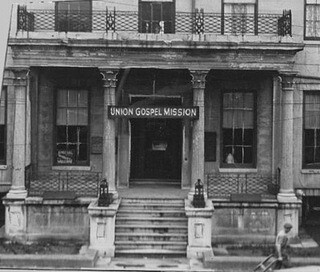I discovered some interesting new (to me) historical information this week that I thought I'd pass on for any who are interested.
As you may or may not know, that song was written by two Louisvillians – sisters Mildred and Patty Smith Hill. In fact, right down the street from Iroquois Park - near where I grew up in Louisville's south end - you can see an historical marker commemorating the Hill home in that neighborhood and their celebrity for writing “the single most recognized song in the English language” (according to the Guiness World Records people).
The sisters are buried together in Cave Hill cemetery just a few blocks from my church, in east downtown Louisville.
All of that, I already knew: That the Hill sisters were from Louisville, that they were school teachers and that they wrote this famous song. Here's the new information I learned...
Patty Smith Hill and her sister grew up in Louisville in the mid-1800s and, encouraged by her parents and contrary to cultural norms, she pursued advanced education and became quite a scholar in the field of early childhood education. One source I read this week called her THE leader in progressive early childhood education at the turn of the century.
When she was first starting out, she taught at Sunday School classes and developed an interest in what was called “the Kindergarten Movement.” Prior to the mid-1800s, kindergartens did not exist in our country and there was a movement to begin serious and organized efforts at educating our youngest children through these kindergartens (which, themselves, started in Germany, as you may know).
So, as it happens, when the people of the Union Gospel Mission – the church from which my current church grew out of – were meeting together in the 1880s, they saw a need in the downtown Louisville area, the need for early childhood education for the poor and immigrant children in the area.
And I don't know how it all came together exactly, but the end result of this meeting together of concerned church folk (and others?) in downtown Louisville, is that Patty Smith Hill ended up being the first head teacher of the first on-going “experimental kindergarten” in Louisville, an effort that not only aided the poor and immigrant children back then, but continued to lead to great advances in early childhood education and inform education the world over.
I'm always interested in any kind of history, but especially "small" and "local" history - the sort not typically written by historians. But I also find it interesting when the "small, local" histories of our parents and grandparents coincides with the larger history of the world around us.
This story, for me, was compelling for many reasons...
To find out that the "happy birthday" ladies were encouraged by their parents to seek higher education at a time when women were actively discouraged from doing so...
To find out that at least the one sister (if not both) were actively involved in some pretty significant and ground-breaking research and educational development (again, at a time when women were discouraged from such) and then finally,
To discover the connection to my local church and its history.
With many thanks to all our teachers, history-keeprs and educators out there.
Monday, May 28, 2012
Union Gospel Mission and Kindergarten
Subscribe to:
Post Comments (Atom)

3 comments:
It is the accumulation of detail like that which fleshes out our general understanding of who we are and from whence we came.
About three miles from my house, sitting on some private property just off a road is a tiny burial ground, I wouldn't even call it a cemetery. There are about a dozen or so small headstones, most battered by over a century of Illinois winters and summers. One of the markers is for the infant son of Charles and Caroline Ingalls, whose daughter, Laura, would later write of her childhood in the upper Midwest in the "Little House" series of books. On their way through what is now the suburbs and what had to be then the vastness of the prairie, Caroline had a child who died soon after birth, and was laid to rest in this tiny plot.
This is who we are, where we've come from. Without any understanding, any acknowledgment of it or its provenance, we become utterly lost. This is the kind of thing I find not only fascinating in its own right, but important for what it tells us about ourselves. Thanks, Dan.
History is cool.
Thank you, Geoffrey...
Have you seen the Ingalls tombstone, or just read about it?
I'll do another history-themed post next, I think you'll like it.
I've sneaked up and seen it. I should probably do it again and snap a picture so I can post it.
Post a Comment